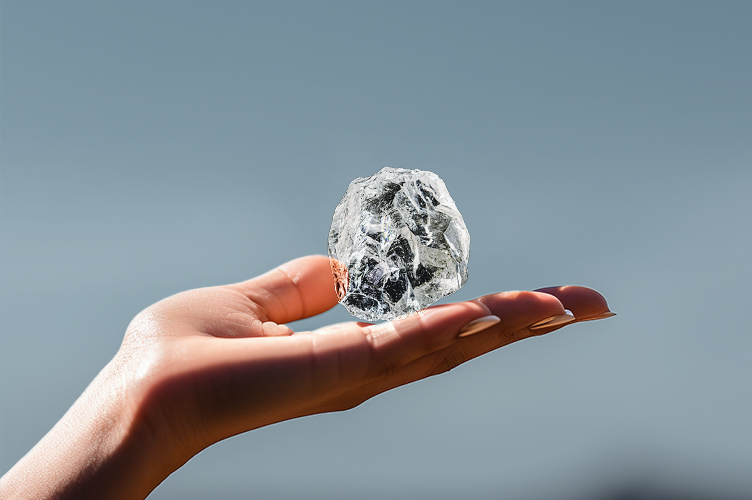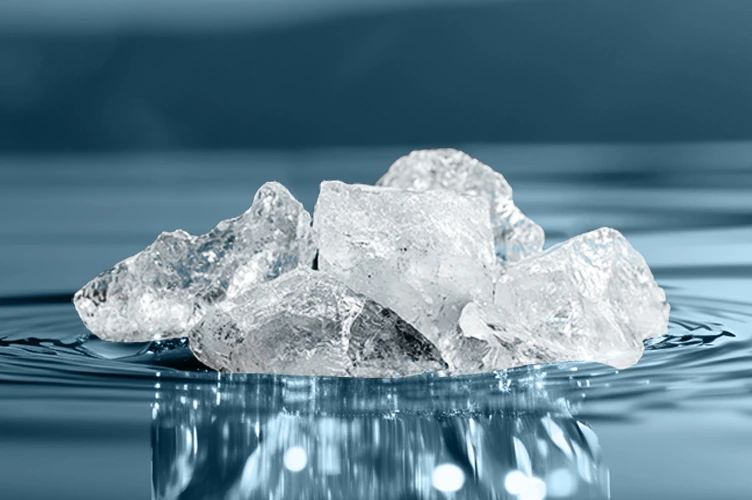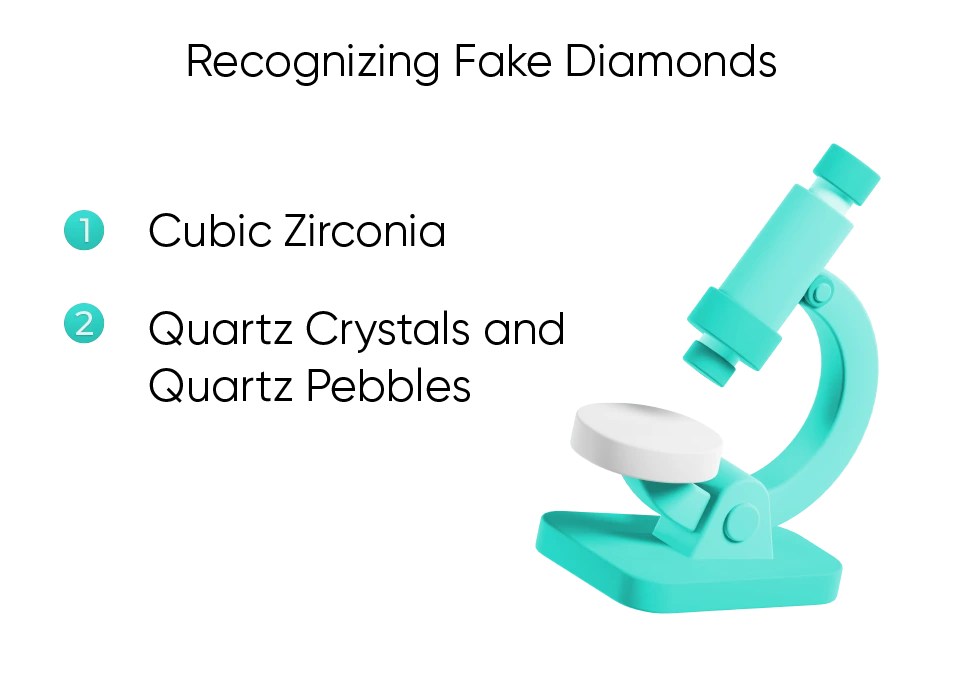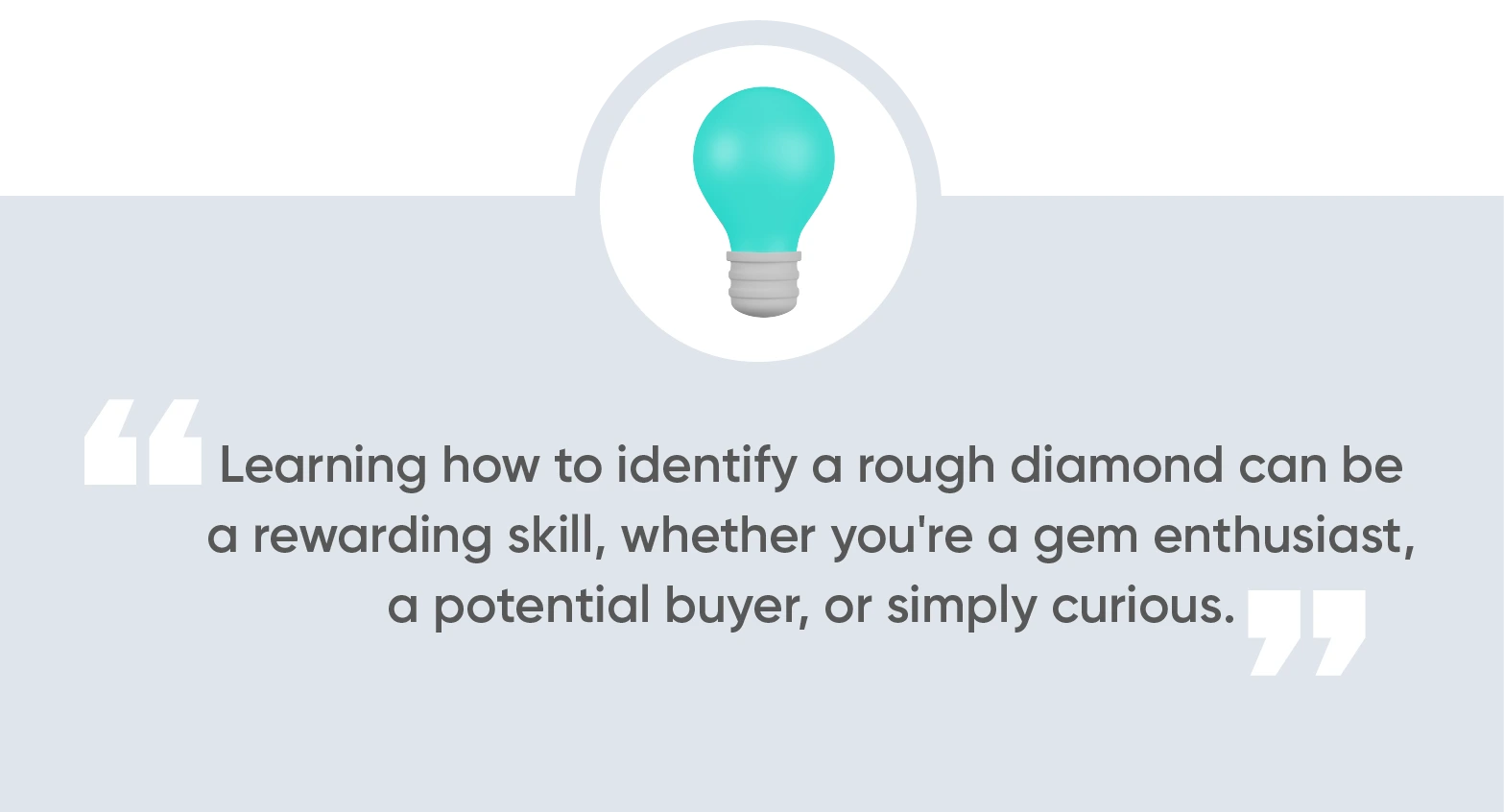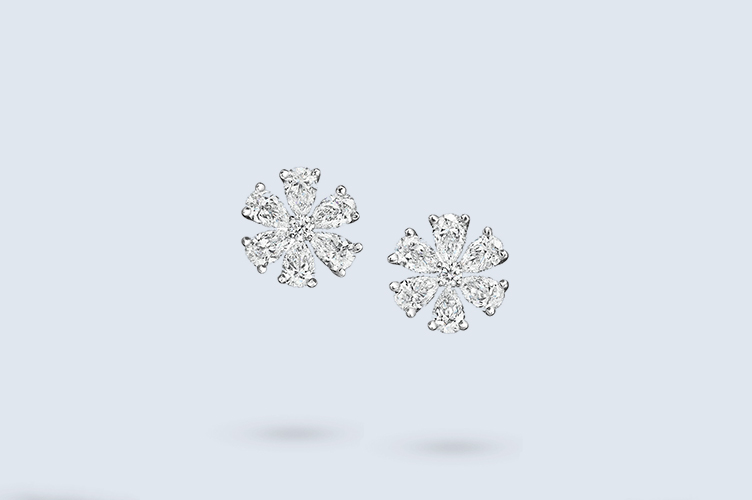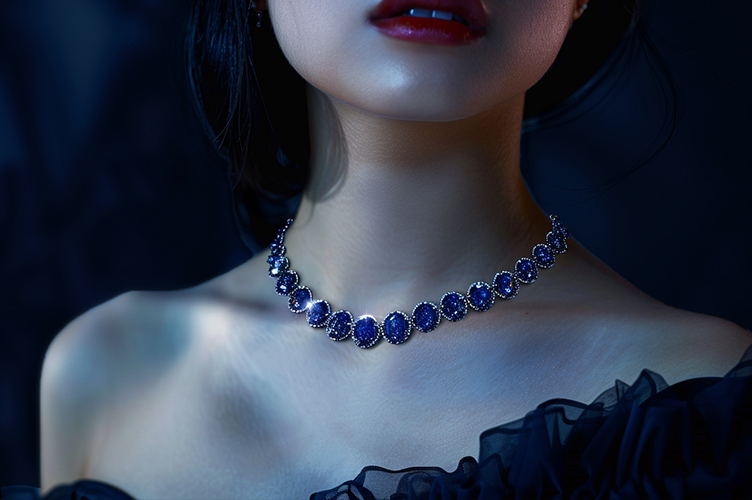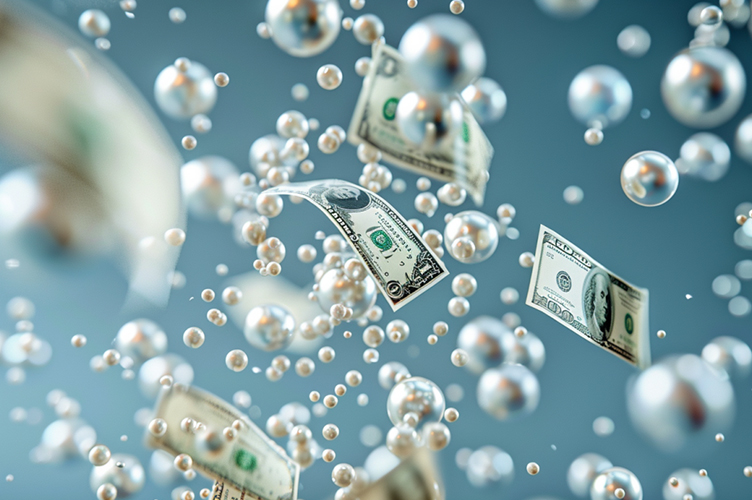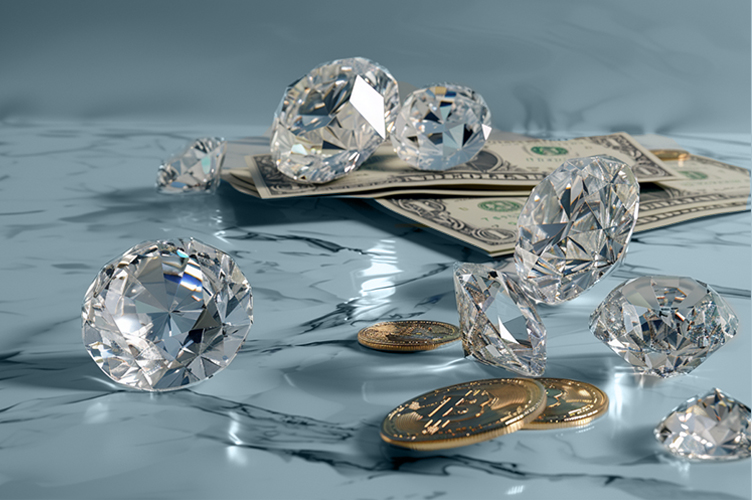When we think of diamonds, we often envision dazzling, polished gemstones. However, these coveted stones start their journeys as raw, uncut rough diamonds.
Want to learn how to identify a raw diamond and differentiate it from other gemstones? Keep reading to unravel the art of identifying raw diamonds by their unique features, as well as learn more about the various methods and tools at your disposal.
What You Will Learn
What Do Raw Diamonds Look Like?
Natural raw diamonds display distinct features that distinguish them from their polished counterparts. Understanding these features is important for proper identification.
- Crystal Form:
Raw diamonds often exhibit a crystalline structure known as crystal form. This structure can take various shapes, including octahedral (two pyramids base-to-base), dodecahedral (twelve faces), or cubic (eight equal faces). This crystal form gives natural diamonds a unique appearance.
- Color and Clarity:
Raw diamonds may appear cloudy, opaque, or translucent due to impurities and inclusions. The color can range from clear to brown, yellow, or even green. It’s important to remember that rough diamonds typically lack the spectacular brilliance of cut diamonds, which makes identification challenging.
- Surface Texture:
Unlike polished diamonds with smooth, reflective surfaces, naturally occurring diamonds feature rough, unpolished exteriors. This surface texture reflects their natural state, directly extracted from the earth.
How to Identify Rough Diamonds
There are several common methods for identifying and differentiating rough diamonds from their geological counterparts.
1. Visual Inspection
Visual inspection is the first step in identifying raw diamonds. Here’s what to look for:
- Unpolished Surface: Raw diamonds have an unpolished, rough surface that lacks the brilliant facets of cut diamonds.
- Distinctive Shape: Look for natural crystal shapes, like octahedrons or cubic forms. These unique structures are a hallmark of most diamonds.
- Inclusions: Raw diamonds often contain visible inclusions, such as small minerals or other crystals trapped inside. These imperfections can be seen with the naked eye and add to the raw diamond’s character.
2. Scratch Test
Diamonds are renowned for their exceptional hardness, making them resistant to scratching. You can perform a scratch test using common materials like corundum. Just try scratching the suspected diamond crystal with corundum (ruby or sapphire) and vice versa; if the uncut rough diamond leaves a scratch on the corundum, it’s a strong indicator that you might have a raw diamond on your hands.
3. Water Test
The water test exploits the unique properties of how diamonds break the surface tension of water. Place a suspected diamond on the surface of the water and, if it floats or doesn’t adhere to the surface, it might be a rough diamond.
4. Diamond Tester
Diamond testers are handheld devices that measure a gem’s thermal conductivity. Real diamonds disperse heat rapidly, while most other gemstones do not. A diamond tester can quickly confirm if a gem is a raw diamond, and these devices provide a straightforward and non-destructive method of identification.
5. Mineral Testing Kit
A mineral testing kit can help you identify raw diamonds. These kits typically contain a set of common minerals and tools to test hardness and other properties.
6. Professional Assessment
When in doubt, it’s advisable to consult a certified gemologist or professional. They have the expertise and specialized tools to accurately identify raw diamonds and can provide you with a definitive assessment.
Suggested Read: Types of Rough Diamonds | BriteCo Jewelry Insurance
Recognizing Fake Diamonds
To ensure you’re dealing with raw diamonds and not imitations like cubic zirconia or similar substances, learn how to recognize fake diamonds.
1. Cubic Zirconia
Cubic zirconia, often abbreviated as CZ, is a popular diamond simulant. It’s a lab-created crystalline material that mimics the appearance of diamonds but lacks their natural properties. CZ is less dense than a real diamond and tends to be flawless, lacking the inclusions and imperfections that are common in natural diamonds.
While the term “cubic diamonds” is not commonly used in the gemological world, it could potentially refer to synthetic diamonds or diamonds with a cubic crystal structure.
2. Quartz Crystals and Quartz Pebbles
Quartz crystals are readily available in nature and have distinct hexagonal shapes with pointed endings. Unlike diamonds, quartz crystals are transparent or translucent but don’t exhibit the same sparkle. Quartz crystals are softer than diamonds, making them susceptible to scratching.
Quartz is a common mineral, and small, irregularly shaped quartz pebbles can sometimes be mistaken for raw diamonds, especially by novice gem enthusiasts.
Tumbled quartz pebbles are quartz stones that have been polished and rounded through a tumbling process. While they may have a smooth and shiny appearance, they still lack the brilliance, hardness, and transparency of raw or faceted diamonds. The same issue arises with water-worn quartz pebbles.
What to Do if You Find a Raw Diamond
If you suspect you have a natural diamond in your possession, it’s important to handle the situation with care and consideration.
- Avoid Unnecessary Handling: Limit your contact with the suspected diamonds to prevent damage or contamination.
- Seek Professional Verification: When in doubt or if you want a conclusive assessment, consult a certified gemologist or professional.
- Do Not Attempt to Cut or Alter: Never try to cut, shape, or alter a suspected raw diamond. Attempting to modify a rough diamond can reduce its value significantly.
- A Scratch Test is Not Foolproof: While the scratch test can be informative, it’s not foolproof. Some other minerals can also scratch corundum, so it should be used in conjunction with other tests for a more conclusive result.
FAQs
What does an uncut diamond look like?
An uncut diamond, also known as a rough diamond, typically appears as a naturally formed, unpolished crystal. It can vary in color, clarity, and size.
Does an uncut diamond look like a jewelry diamond?
Uncut diamonds may exhibit facets or crystal faces, but these are not as polished or well-defined as those of a cut diamond.
Protect Your Investment
Learning how to identify a rough diamond can be an immensely rewarding skill, whether you’re a gem enthusiast, a potential buyer, or simply curious about these sparkling gemstones. By learning about raw diamonds’ distinctive features and using the methods and tools discussed in this guide, you can confidently recognize these natural wonders within the comfort of your own home. Always exercise caution, seek professional verification when in doubt, and embrace the captivating world of uncut diamonds and their beauty.
Want to insure and protect your natural raw diamonds? At BriteCo, we offer comprehensive and cost-effective diamond jewelry insurance coverage. To learn more, use our convenient online tool to obtain a personalized insurance quote.
Also Check:
Types of Diamond Clarity | BriteCo Jewelry Insurance
What are Nature Inspired Engagement Rings?
Unveiling the Brilliance of the Trilliant Cut Diamond

